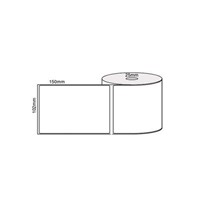Modal competition within the non-bulk freight sector is relatively low, due to road freight's dominance in terms of price, speed and convenience.
Only road freight can offer a door-to-door service without transport mode changes and, as such, is quicker than rail or coastal sea freight alternatives. As a result, in 2012 road freight accounted for 84% of Australia's total freight.
However, road freight is the most fuel intensive and increasing cost efficiencies of rail freight are making this an attractive alternative for some inter-capital city freight.
The position is reversed with bulk freight. In 2010 rail freight accounted for 81% of all bulk freight within Australia.
Three board transport modes (interstate, intrastate, capital city and courier) have a roughly equal share of road freight revenue, although going forward interstate and capital city.
Each segment has differing levels of competition and are services by different vehicle configurations.
TRANSPORT MODES
Interstate
- Fastest growing segment in the prior five years, with continued growth outlook driven by increasing inbound container freight (which is then predominantly distributed throughout Australia via interstate road freight).
- Sydney's container ports are operating at full capacity, requiring some container freight to be shipped to Melbourne and then transported by road to Sydney.
- Predominantly serviced by rigid and articulated vehicles.
- Articulated trucks have the highest utilisation rates, running lades (with goods) 72% of the time in 2010.
- Articulated trucks carry 12% of freight by billion tonne kilometre. This is despite only accounting for 2.3% of registered trucks in Australia. This is due to the larger size of vehicles and greater distance travelled.
Intrastate
- Intrastate transport captures road freight services within a state and excludes transport to and around capital cities
- The distances involved mean that larger articulated and rigid trucks provide much of this service.
- Low levels of regional population and manufacturing growth have seen demand for this segment remain essentially flat over the past five years.
Capital city and courier
- Services predominantly by light commercial vehicles which tend to have relatively low utilisation rates (due to the difficulty in obtaining return load within an urban environment).
- This segment has a particularly high level of competition (and consequent low profitability) due to low entry costs (second hand light vehicles are not expensive) and the high driver availability (specialised driving skills not required).
- Growth in online retailing and increasing focus on the "last mile" is crating opportunities in this space.
COMPETITIVE ENVIRONMENT
The road freight industry is highly competitive. Smaller operators in particular have little influence over major costs such as fuel and labour or over the price they are able to charge their customers. They are price-takers. Even larger operators struggle to differentiate their services from those provided by a large number of owner/drives and small operators who drive down price by engaging in price-led competition.
PROFITABILITY AND COSTS
The competitiveness of the road freight industry is reflected in low industry returns. With profitability of just 6.2%, the dividing line between success and failure is narrow. It is imperative that road freight operators understand and measure their costs and resist the temptation to buy new volume by underquoting.



